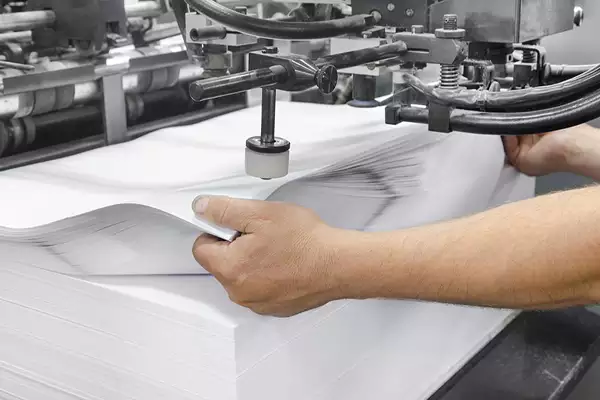What are the Maintenance Requirements for RTO in the Printing Industry?
Regenerative Thermal Oxidizers (RTOs) are widely used in the printing industry to control air pollution by removing volatile organic compounds (VOCs) from exhaust air. The system consists of a combustion chamber and a heat exchanger, which oxidizes the VOCs and releases clean air into the atmosphere. However, like any other equipment, RTOs require regular maintenance to ensure optimal performance and efficiency. This article will discuss the different maintenance requirements for RTOs in the printing industry.
1. Regular Inspection of the Combustion Chamber
- The combustion chamber is the heart of the RTO, where the oxidation of VOCs takes place. Therefore, it is essential to inspect the combustion chamber regularly to ensure that it is functioning correctly.
- The inspection should include a visual examination of the burner, the combustion zone, and the refractory lining. Any signs of damage or wear and tear should be addressed immediately.
- In addition, the inspection should also involve checking the temperature, pressure, and gas flow rate to ensure that they are within the normal range.
2. Cleaning the Heat Exchanger
- The heat exchanger is responsible for transferring heat from the hot exhaust air to the incoming cold air. Over time, the heat exchanger can become fouled with dust, debris, and other contaminants, reducing its efficiency and performance.
- Regular cleaning of the heat exchanger can help prevent clogging and ensure optimal heat transfer efficiency.
- The cleaning process should involve removing the heat exchanger and cleaning it with compressed air or water. Care should be taken not to damage the heat exchanger fins, which can be delicate and easily bent.
3. Checking the Valves and Dampers
- The valves and dampers are critical components of the RTO that regulate the flow of air and gas through the system.
- Regular checks of the valves and dampers should be carried out to ensure that they are functioning correctly and are not leaking.
- Any damaged or worn out valves and dampers should be replaced promptly to prevent any air leaks that can affect the system’s performance.
4. Lubricating Moving Parts
- The RTO has several moving parts such as fans, motors, and bearings that require regular lubrication to prevent wear and tear.
- Regular lubrication can help extend the lifespan of these components and prevent costly repairs.
- It is essential to use the recommended lubricants and follow the manufacturer’s guidelines for lubrication frequency.
5. Monitoring the Performance of the RTO
- Regular monitoring of the RTO’s performance can help detect any issues or inefficiencies early on, allowing for timely repairs and improvements.
- The monitoring should include measuring the temperature, pressure, and gas flow rate at various points in the system.
- It is also useful to monitor the VOC emissions and compare them to regulatory standards to ensure compliance.
In conclusion, regular maintenance of an RTO in the printing industry is crucial to ensuring optimal performance, efficiency, and compliance with regulatory standards. Regular inspections, cleaning, and lubrication of the system’s components, as well as monitoring its performance, can help prevent costly repairs and downtime. By following the manufacturer’s guidelines and scheduling regular maintenance, printing companies can ensure that their RTOs operate smoothly and efficiently, contributing to a cleaner and safer environment.


会社紹介
We are a high-tech equipment manufacturing enterprise specializing in comprehensive treatment of volatile organic compounds (VOCs) waste gas and carbon reduction and energy-saving technologies in the printing industry.
コアテクノロジー
Our company possesses four core technologies: thermal energy, combustion, sealing, and automatic control. We have capabilities in temperature field simulation, air flow field simulation modeling, ceramic heat storage material performance, comparative selection of zeolite molecular sieve adsorption materials, and experimental testing of high-temperature incineration and oxidation characteristics of VOCs.
チームのメリット
We have established an RTO technology research and development center and an exhaust gas carbon reduction engineering technology center in Xi’an, as well as a 30,000 square meter production base in Yangling. We are a leading manufacturer in terms of global sales volume for RTO equipment and zeolite molecular sieve rotary wheel equipment. Our core technical team is composed of experts from the Liquid Rocket Engine Research Institute of the China Academy of Space Technology. We currently have over 360 employees, including more than 60 research and development technicians. Among them, there are 3 senior engineers at the research fellow level, 6 senior engineers, and 47 thermodynamics PhDs.
コア製品
Our core products include the regenerative thermal oxidizer (RTO) with rotary valve heat storage and the zeolite molecular sieve adsorption and concentration rotary wheel. Combined with our expertise in environmental protection and thermal energy system engineering, we can provide customers with comprehensive solutions for industrial waste gas treatment, carbon reduction, and thermal energy utilization under various operating conditions.

認定、特許、栄誉
- 知的財産管理システム認証
- 品質管理システム認証
- 環境マネジメントシステム認証
- 建設業企業資格
- ハイテク企業
- Patent for Rotary Valve of Rotary Heat Storage Oxidation Furnace
- 回転翼蓄熱式焼却装置の特許
- ディスクゼオライトロータリーホイールの特許
適切な RTO 機器の選び方
- 廃ガスの特性を決定する
- 地域の規制と排出基準を理解する
- エネルギー効率を評価する
- 運用とメンテナンスを考慮する
- 予算とコストの分析
- Select the appropriate type of RTO
- 環境と安全の要素を考慮する
- Performance testing and validation

当社のサービスプロセス
- Preliminary consultation, on-site inspection, and needs analysis
- ソリューション設計、シミュレーションモデリング、ソリューションレビュー
- カスタマイズされた生産、品質管理、工場テスト
- オンサイト設置、試運転、トレーニングサービス
- 定期的なメンテナンス、技術サポート、スペアパーツの供給
We are a one-stop solution provider with a professional team that tailors RTO solutions to meet the specific needs of our customers.
著者宮
